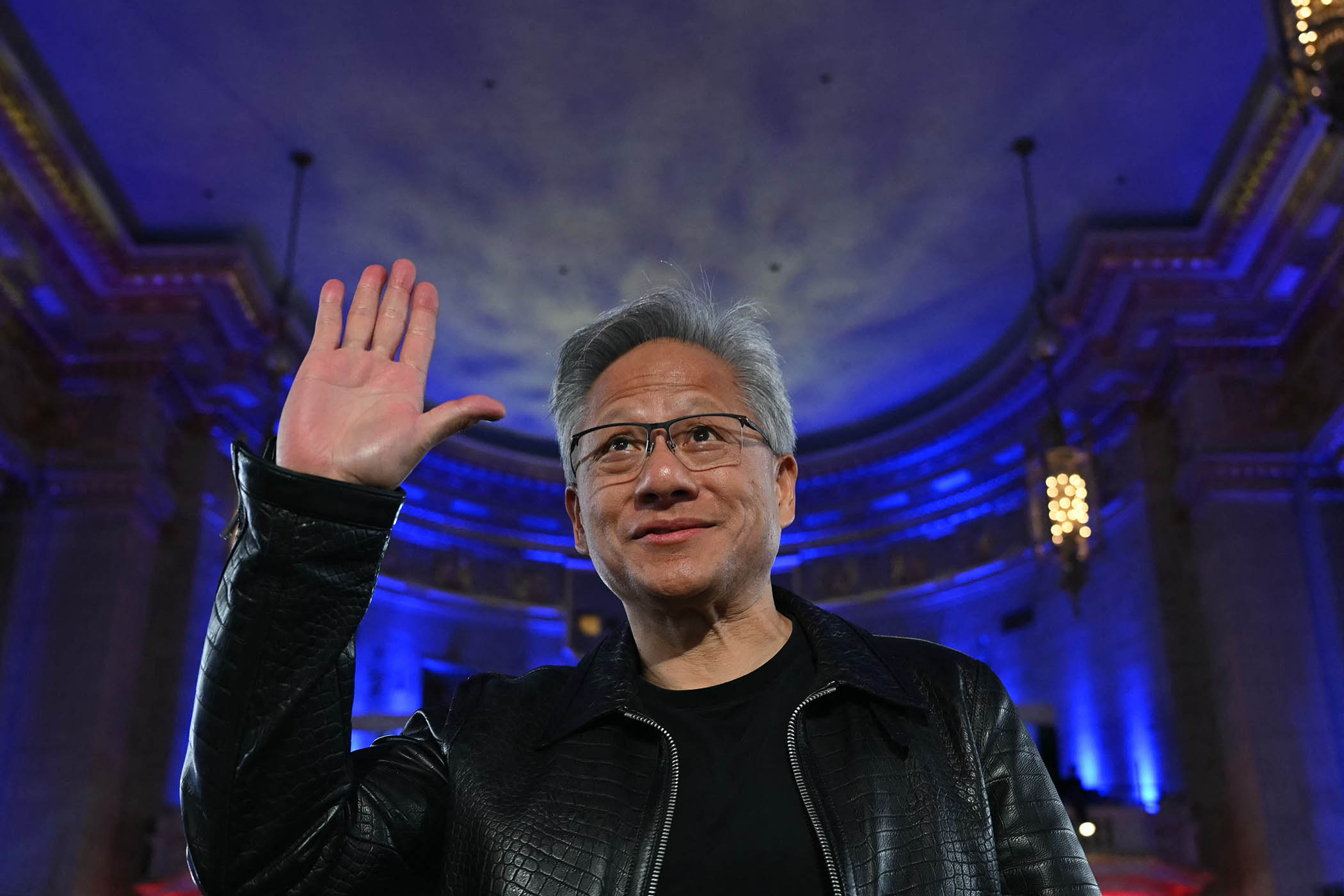Never before has so much money hung on a single quarterly earnings report. Investors have been fretting for weeks about whether chip-making giant Nvidia would meet the market’s exalted expectations or fall short and potentially pop what many fear is a massive stock market bubble based on excessive optimism about the economic benefits of AI.
Relief was widespread on Wednesday evening when the world’s biggest company – which last month became the first to be valued (briefly) at $5tn – beat profit forecasts, and its CEO, Jensen Huang, confidently predicted even better results to come. In the third quarter, Nvidia banked revenues of $57bn (£44bn), up 62% year-on-year, and profits of $31.9bn. “There has been a lot of talk about an AI bubble,” said Huang. “From our vantage point, we see something very different.”
Amid the bubble talk, concern has grown that too much of the stock market’s value is concentrated in the Magnificent Seven companies (Nvidia, Microsoft, Apple, Amazon, Google parent Alphabet, Meta and Tesla). But because of its significance as the maker of the semiconductor chips most desired by AI producers, Nvidia is the first among equals, the special one, whose performance matters far more than any one of the others. Lately, Google’s shares are sharply up, and Meta’s down, but neither affected faith in AI. Yet if Nvidia stumbles, it will hit not only the shares of a firm now accounting for about 8% of the value of the entire S&P 500 index, but also take down the rest of the Magnificent Seven and the broader market beyond.
Nvidia is perhaps the most systemically important company in modern market history. The closest historical parallel is Cisco Systems during the dotcom bubble, which, in March 2000, briefly surpassed Microsoft to become the world’s most valuable company, worth $579bn, some 4.6% of the S&P 500, as it rode the wave of internet infrastructure spending. It lost about 85% of this value when the bubble burst.
This week’s results provided one major reassurance – that demand is running ahead of supply. But will Nvidia be able to produce enough of its top-of-the-range chips, and will it be able to source the electricity and facilities to keep boosting its data-centre capacity? The answer from Huang was a resounding yes. But chip-making and database capacity, and the supply of affordable electricity, seem certain to remain closely watched as investors seek leading indicators that AI companies have become overpriced.
Bubble-watchers are keeping a beady eye on the increasingly circular funding arrangements among the leading AI firms. Nvidia invests in OpenAI; OpenAI buys Nvidia chips. Microsoft funds AI companies; those then buy Microsoft cloud services. If, at some point, it becomes clear that Nvidia is buying its own chips rather than selling into genuine demand, the market could turn rapidly. Several of the Mag 7 have also been aggressively tapping up debt markets in recent weeks. AI expansion is no longer being funded only with cash.
Ultimately, the question of whether valuations are realistic or frothy will be answered with evidence that using AI improves (or not) corporate profitability. How soon it would be reasonable to expect that proof is debatable, but it is probably not in the next few months.
For those investors convinced that this is a bubble, what to do about it is far from simple. If most investors remain bullish, it may be more rational to join rather than oppose them, riding the positive momentum – so long as you are confident of getting out just before the popping noises start. This is known as the “greater fool” theory of investing, which says to keep investing so long as there exist greater fools who will buy the shares when you want to sell.
Many investors are convinced it is others, not they, who are the greater fools – so bubbles often keep growing long after it is obvious that valuations are out of whack. When the bubble eventually bursts, they may turn out to have been the greater fools.
Photograph by Andrew Caballero-Reynolds/AFP via Getty
